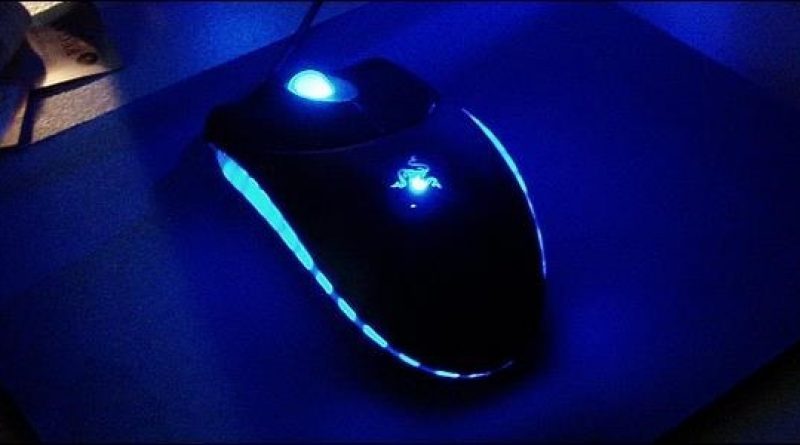Mouse DPI: What does it mean?
New guide on everything you need to know about the DPI value of your mouse. You will be interested to know these details, especially if you are a gamer. Normally, when you buy a mouse, the first thing you notice is the number of buttons it has, the connection interface (USB or wireless) and little else. But the truth is that to get a good mouse you have to look beyond that.
In video games, certain features like DPI are especially important in getting what you’re looking for from your mouse. These are values that you can ignore when you buy a mouse to surf the net or for office automation and other daily tasks with your computer, but in video games, it is a clear competitive advantage that can make a difference. Especially if you like eSports and compete.
It is also especially important in computers for graphic design; therefore, those who dedicate themselves to artistic tasks with their PC should also pay attention to these qualities when choosing the perfect mouse.
How to choose the perfect mouse?
To choose a good mouse you must take into account the following considerations:
What do you need it for? if it is for navigation, office automation, and more normal use, any decent one is worth it. If it’s for video games or design, then you should be looking for specific mice for these uses. Many brands have special models for gaming. Maybe if you want to move from one place to another with your laptop, you should think better about a wireless mouse to avoid having to connect it with the cable and it is more comfortable for you (especially Bluetooth ones that do not need a USB port to connect the RF adapter).
How much am I going to use it?: If it is a short time, you should not worry too much, as long as they are not the typical mini mice that have reduced sizes and are annoying to handle in the long run. But if you are going to spend many hours with it, ergonomics is very important. A mouse with an ergonomic design that adapts well to the anatomy of your hand and does not force it into an uncomfortable posture can save you a lot of trouble and inconvenience.
Polling rate: is the frequency with which the mouse reports its position to the PC controller. That speed is measured in hertz (Hz), that is, the number of times they do it per second. A mouse with 1000Hz means that it will report the pointer position 1000 times in one second (every 1ms). A higher rate will reduce the delay between the movement of your hand and the update of the pointer on the screen. But you should also keep in mind that the higher the frequency or the polling rate, the greater the consumption of CPU resources since you must run the update routine more times. Although for a modern hardware team it is not a big effort…
Optical vs laser: The difference from current technology, now that the ball of the early mice has disappeared, is that optical mice use an LED to detect movement reflected by a surface and lasers use a laser for it. Both are good, the only thing that for opaque surfaces the LED works well, while it is not suitable for certain surfaces such as glass, etc. Instead, the laser can be used on certain surfaces where the optics does not work properly. In addition, laser technology is more sensitive and usually has a higher DPI, so if you do not want your mouse to move too fast on the screen and you cannot control it, you should lower the sensitivity in the settings.


Does DPI really matter?
The difficult question to answer. The easiest thing would be to say yes, it matters for designers and video games. And that would be true, but you have to take it with caution. Higher DPI is good, but too high a DPI could create too much acceleration of the cursor across the screen and move almost uncontrollably with the slightest movement of your hand. But I repeat, it would be beneficial for design, for some video games or for very large screens such as 4K or WQHD.
Well, first of all, you should look back. The ancient mice had a metal ball lined with rubber that rotated on the mouse pad and moved mechanical rollers that passed an analog signal to a chip inside and this digitized it and transformed it into data for the position of the mouse. Pointer. That ball picked up lint and dirt and you had to clean it periodically, in addition to not being so precise.
Now with optical and laser technology, the IR and laser LEDs emit light that is reflected by the surface and a sensor captures this to transform that data into cursor movement. Being digital technology, the precision of these mice is much higher. This has led to an increase in DPI and polling rate.
What exactly is DPI?
DPI stands for Dots per Inch, meaning dots per inch. Obviously, it is a unit that measures the sensitivity of the mouse. A low DPI indicates that if you make a certain movement with your hand, the cursor will advance little. But with a high DPI, if you could exactly repeat that same movement, the cursor would move faster, that is, it reacts better to your movements even if they are small.
For example, a mouse with a DPI of 1000 would mean that for every inch (approx. 2.54 cm) you move the mouse the cursor would move 1000 pixels (PX). With this data, contrary to what many think, a mouse with more DPI can become even more imprecise than one with a lower DPI. That is why many manufacturers and professionals have played down the importance of DPI.
This is where it becomes interesting for artists and gamers since, for example, to take the cursor to where you want to shoot in a video game or to draw something small; a higher DPI can help you with precision and sensitivity. But remember that too high a DPI can have the opposite effect that you expect, that the cursor with any slight shaking of your hand or movement goes beyond where you really want. That is also very awkward and you may have to modify your mouse settings to lower the DPI.
What DPI do i need?
So Imagine that you have a mouse with a DPI of 4000 and you have a 4K screen with a resolution of around 4000 horizontal pixels. If you want to get faster from one side of the screen to the other to react faster in a video game, then with that mouse you would only have to move about two and a half centimeters of your hand to go from one side to the other with the cursor.
But of course, imagine that you are trying to aim in a shooter-type video game to shoot, or you are drawing something in an editing program and it is a small surface that you are coloring … with a low DPI you could make big movements without going off, while a high DPI it would make the tool you are using come off easily.
Bottom line, high DPI for tasks that need quick reactions, while lower DPI for those that need more precision when aiming. But the DPI should not be too low, because even if you adjusted a higher sensitivity in the configuration when having low DPI, the cursor could jump around from one place to another, and that would not be a natural and pleasant movement either.
Is DPI the same as sensitivity?
Yes and no. In principle, according to what you have read, it has a lot to do with it. But the sensitivity can be adjusted in the operating system settings independently of the DPI. To make you understand it better, DPI is the capacity of the hardware and sensitivity of the software. You can combine a low DPI with high sensitivity or a high DPI with low sensitivity and play around with that to suit your needs.
The sensitivity and DPI can be adjusted from the configuration panel of the operating system or from the video game or software itself. In some cases, these also have their own DPI and sensitivity settings. I recommend that you do tests to determine which configuration you feel most comfortable with, only you know which the best is. It is a matter of taste.
By the way, people with reduced mobility or with some type of problem, perhaps playing with the sensitivity settings or DPI can be very beneficial to them so they can handle the mouse well. That is, they are good accessibility settings. Well after reading all I would suggest all to have a look at saim deals to get a better review about the best mouse specially the gamers who are looking for quite mouse mouse.
Final conclusion
On WQHD, 4K, 8K displays, etc., and with high pixel density, a mouse with a high DPI is better. On small screens, a lower DPI is better. And in intermediate screens in terms of resolution, you can buy a mouse with a high DPI without fear, since you can play with its settings and sensitivity to adapt it to what you like best.
For video games, with a DPI of 800 or 1200 would be more than enough, even if you are a professional you will prefer these rates. A higher DPI would be more of a marketing claim from certain mouse makers than something really practical.
What you should not do is with high-resolution screens buy a mouse with low DPI or you will have to move the mouse many times so that it reaches from one end of the screen to the other. And that would also mean having a larger size mouse mat so you don’t get out of it or be lifting and supporting the mouse when you need to move the cursor over long distances.




